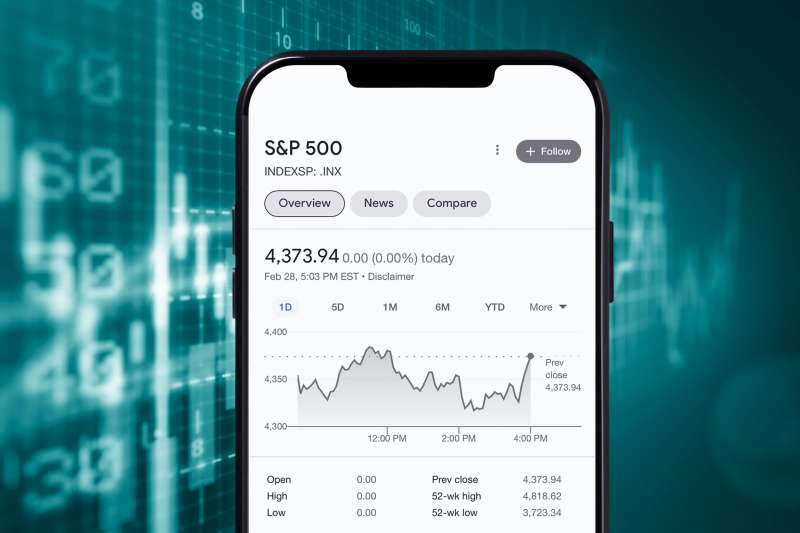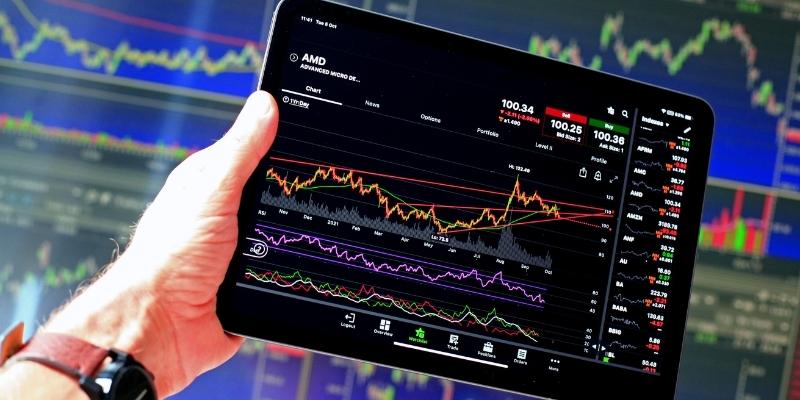Dec 27, 2023 By Triston Martin

S&P 500 index tracks the performance of 500 of the biggest U.S. public companies by market capitalization or the value of their outstanding publicly traded shares. Since it grants companies a proportional influence on the performance of the index according to their market capitalization and market capitalization, this index S&P 500, is strongly influenced by the performance of its biggest companies.
S&P 500 is widely recognized as the primary measure of the performance of high-quality stocks within the U.S. Businesses are classified as large-cap stocks if their market capitalization exceeds $10 billion or greater.
Index funds that follow those that track S&P 500 own stocks included in the index to imitate its performance as close as possible. Like all index funds, they are managed passively, which means managers of the fund only purchase and sell shares to ensure that the fund's allocation of assets is within the benchmark. Index funds don't engage in fund research to attempt to outdo the market; they try to be as close as the market.
Analyze Tracking Error
Tracking error can be a gauge of an index fund's efficiency in replicating or capturing its benchmark index's performance, which in this case is the S&P 500. The drawback to researching and analyzing this is that mutual fund families are not required to display the tracking errors in their index funds publicly. But, there are a few information points you can study to understand performance tracking.
Research websites like Morningstar and Kiplinger demonstrate how similar the fund's return is to the benchmark it is aiming for. If the returns are lower than the benchmark by about similar amounts to that of the fund's expense ratio, the accuracy of tracking is very close.
Analyze Expense Ratio
When you look at past performance, you should also consider your expense rate. This will show to what extent the investment has been tracking the benchmark index over time. For instance, if an S&P 500 Index mutual fund's expense rate is 0.2 percent, a five-year annually adjusted return of 10% and low tracking errors could result in an annualized yield of approximately 9.8 percent. The only difference between the index's return and the mutual fund's return is the fund's cost.
Before Investing
Before deciding which index funds to put your money into, consider other costs, including the cost of trading. For instance, if your account is already with Vanguard and you are charged a transaction cost to buy a mutual fund such as that of the Schwab S&P 500 Index, which isn't part of the Vanguard group of funds. The typical transaction fee is between $10 to $20. If you're dollar-cost averaging by buying shares in a regular interval of your index fund, your cost-to-cost ratio might be lower; however, trading fees could cause the fund to be more costly than other alternatives.

Fidelity 500 Index Fund
- Initial Investment: $0
- Symbol: FXAIX
- NER: 0.015%
Schwab S&P 500 Index Fund
- Initial Investment: $0
- Symbol: SWPPX
- NER: 0.02%
State Street S&P 500 Index Fund
- Initial Investment: $1,000
- Symbol: SVSPX
- NER: 0.16%
Vanguard 500 Index Fund Admiral Shares
- NER: 0.04%
- Symbol: VFIAX
- Initial Investment: $3,000
USAA S&P 500 Index Fund Member Shares
- NER: 0.25%
- Symbol: USSPX
- Initial Investment: $3,000
While S&P 500 index funds are designed to track and match the S&P 500, they are always different. Particularly notable are the variations in fees for different funds. A variation in fees of 0.01 percent and 0.03 percent may not seem important, but variations of 0.05 percent or more between funds can create a dramatic impact on your financial situation during your working years, which can lead to retirement.
Risks of Index Funds
Any investment based on market conditions, such as bonds or stocks, means that investors risk losing everything when the entity or the government issuing the security has serious trouble. But, the scenario is different for index funds as they're typically diversified.
An index fund typically owns at least a few securities and can own hundreds, which implies that it's extremely diverse. For an index fund for stocks, for instance, each stock must fall to zero for the index fund, and consequently, the investor would be wiped out. It's possible to be wiped out; it's not likely to occur with standard funds.

Index Fund and Mutual Funds
The funds listed in this list are mutual and index funds; however, they're not always identical. Index funds pool funds of investors to invest passively into an index, such as, for instance, the S&P 500, but it can be a mutual fund as well as an exchange-traded fund. A mutual fund can be an index-managed passively fund; however, it can also be an active investment with managers who attempt to get ahead of the markets rather than indexing.
-

Get to Know How to Use the Dividend Discount Model to Value Stock
Oct 05, 2023
-

Best for You: Venmo vs. PayPal?
Dec 17, 2023
-

Moomoo App Insights: Explore the Free Stock Market Trading Platform
Jul 31, 2024
-

What You Need to Know About Getting Auto Insurance After a Claim
Oct 17, 2023
-

What are the 20 Largest Banks in the World by Total Assets?
Jul 29, 2024
-

Rewards Credit Cards — All You Need To Know
Feb 07, 2024
-

Characteristics of Trust
Oct 15, 2023
-

Artificial intelligence assistants and risk
Oct 11, 2023
-

What is credit card consolidation?
Jan 04, 2024
-

What You Put Into a 401(k) Plan Is Yours to Keep
Jan 12, 2024
-

Teach Kids About Charity
Feb 21, 2024
-

RealEstateU Review: A Complete Analysis
Feb 12, 2024